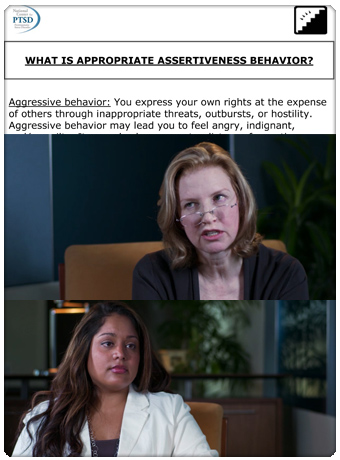
Throughout this lesson you have been introduced to key aspects, techniques and tools for Session Seven of STAIR on Agency in Relationships. Key points to remember are:
- The primary goal of Session Seven is to identify current difficulties in appropriate assertiveness and to practice alternative more adaptive behaviors.
- There are three types of boundaries in relationships; Holding others at a distance; Fused Boundaries and Healthy Boundaries.
- There are three types of ways people can establish boundaries through assertiveness behaviors: Aggressive behavior; Non-assertive behavior; and Assertive behavior.
- "I Messages" help your client communicate situations to help resolve the situations.
- The Interpersonal Schemas Worksheet II is used to capture a client's current beliefs as well as identifying alternative, more adaptive schemas.
- Responding to requests can be communicated through the use of "I Messages."









